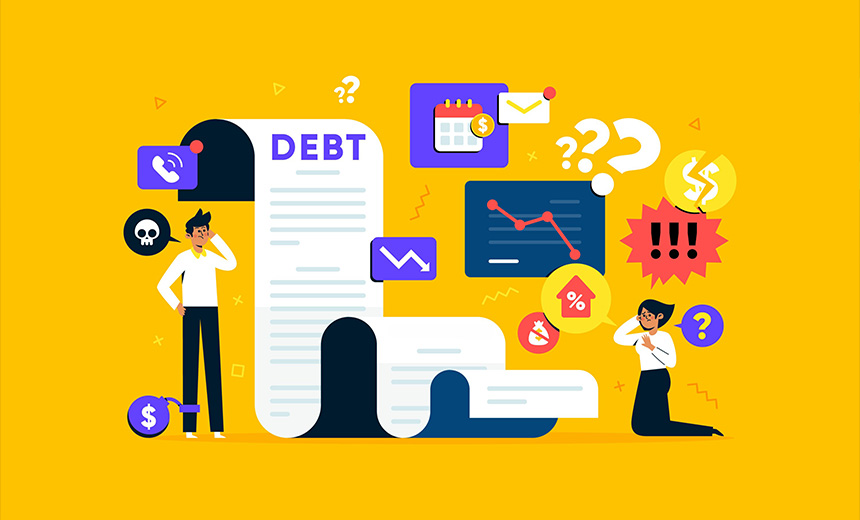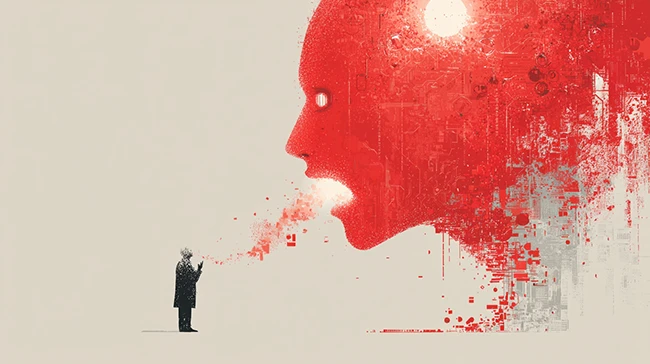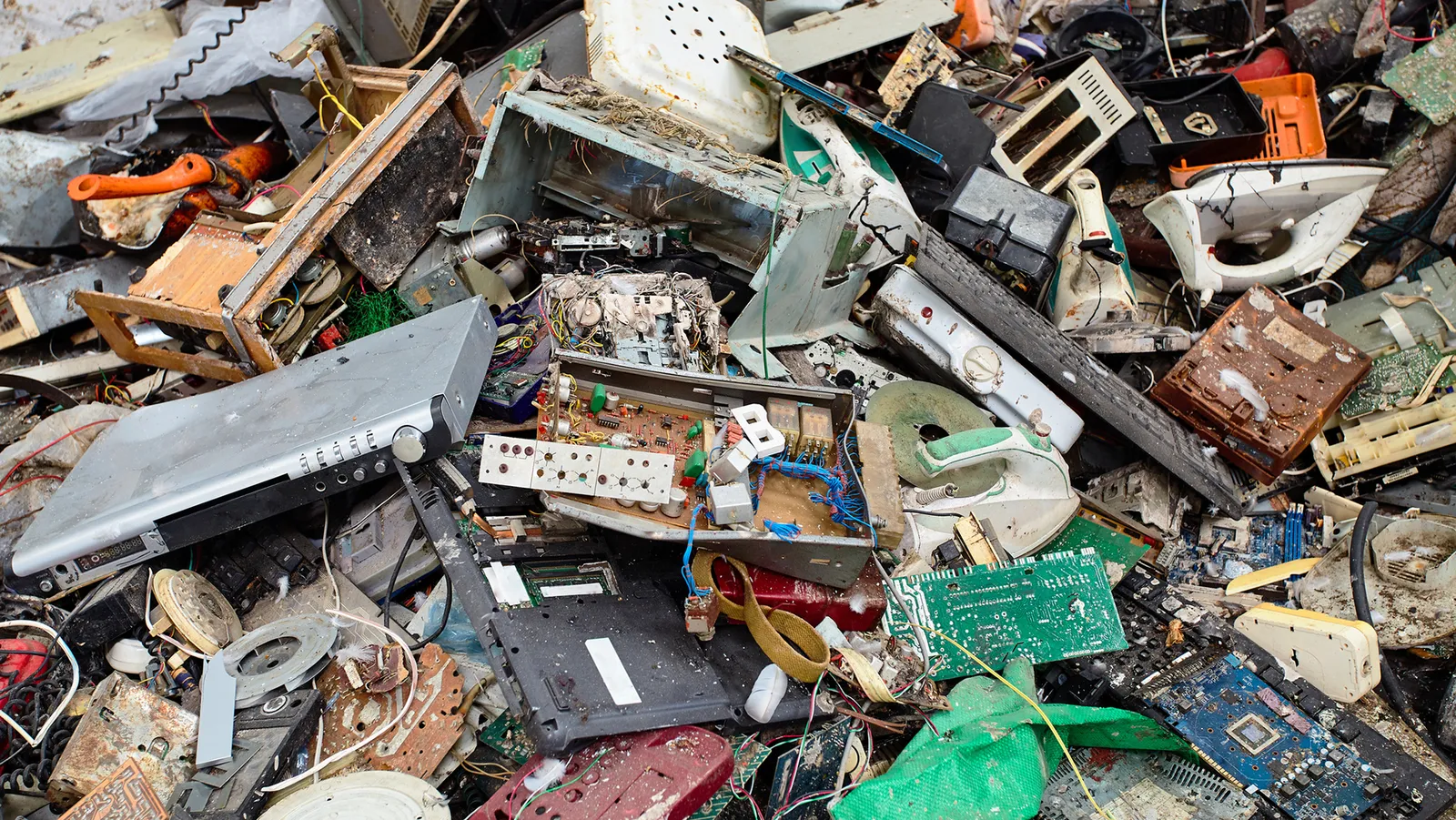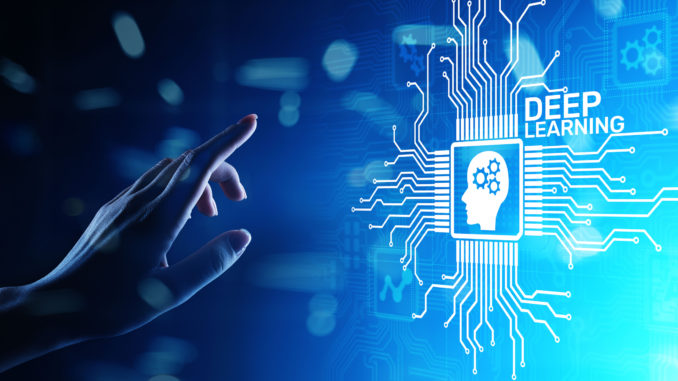Quote for the day:
"Definiteness of purpose is the starting point of all achievement." -- W. Clement Stone
How to Fix Decades of Technical Debt
 Technical debt drains companies of time, money and even customers. It arises
whenever speed is prioritized over quality in software development, often driven
by the pressure to accelerate time to market. In such cases, immediate delivery
takes precedence, while long-term sustainability is compromised. The Twitter
Fail Whale incident between 2007 and 2012 is testimony to the adage: "Haste
makes waste." ... Gartner says companies that learn to manage technical debt
will achieve at least 50% faster service delivery times to the business. But
organizations that fail to do this properly can expect higher operating
expenses, reduced performance and a longer time to market. ... Experts say the
blame for technical debt should not be put squarely on the IT department. There
are other reasons, and other forms of debt that hold back innovation. In his
blog post, Masoud Bahrami, independent software consultant and architect,
prefers to use terms such as "system debt" and "business debt," arguing that
technical debt does not necessarily stem from outdated code, as many people
assume. "Calling it technical makes it sound like only developers are
responsible. So calling it purely technical is misleading. Some people prefer
terms like design debt, organizational debt or software obligations. Each
emphasizes a different aspect, but at its core, it's about unaddressed
compromises that make future work more expensive and risky," he said.
Technical debt drains companies of time, money and even customers. It arises
whenever speed is prioritized over quality in software development, often driven
by the pressure to accelerate time to market. In such cases, immediate delivery
takes precedence, while long-term sustainability is compromised. The Twitter
Fail Whale incident between 2007 and 2012 is testimony to the adage: "Haste
makes waste." ... Gartner says companies that learn to manage technical debt
will achieve at least 50% faster service delivery times to the business. But
organizations that fail to do this properly can expect higher operating
expenses, reduced performance and a longer time to market. ... Experts say the
blame for technical debt should not be put squarely on the IT department. There
are other reasons, and other forms of debt that hold back innovation. In his
blog post, Masoud Bahrami, independent software consultant and architect,
prefers to use terms such as "system debt" and "business debt," arguing that
technical debt does not necessarily stem from outdated code, as many people
assume. "Calling it technical makes it sound like only developers are
responsible. So calling it purely technical is misleading. Some people prefer
terms like design debt, organizational debt or software obligations. Each
emphasizes a different aspect, but at its core, it's about unaddressed
compromises that make future work more expensive and risky," he said.Modernizing Collaboration Tools: The Digital Backbone of Resilience
 Resilience is not only about planning and governance—it depends on the tools
that enable real-time communication and decision-making. Disruptions test not
only continuity strategies but also the technology that supports them. If
incident management platforms are inaccessible, workforce scheduling
collapses, or communication channels fail, even well-prepared organizations
may falter. ... Crisis response depends on speed. When platforms are not
integrated, departments must pass information manually or through multiple
channels. Each delay multiplies risks. For example, IT may detect ransomware
but cannot quickly communicate containment status to executives. Without
updates, communications teams may delay customer notifications, and legal
teams may miss regulatory deadlines. In crises, minutes matter. ...
Integration across functions is another essential requirement. Incident
management platforms should not operate in silos but instead bring together IT
alerts, HR notifications, supply chain updates, and corporate communications.
When these inputs are consolidated into a centralized dashboard, the
resilience council and crisis management teams can view the same data in real
time. This eliminates the risk of misaligned responses, where one department
may act on incomplete information while another is waiting for updates. A
truly integrated platform creates a single source of truth for decision-making
under pressure.
Resilience is not only about planning and governance—it depends on the tools
that enable real-time communication and decision-making. Disruptions test not
only continuity strategies but also the technology that supports them. If
incident management platforms are inaccessible, workforce scheduling
collapses, or communication channels fail, even well-prepared organizations
may falter. ... Crisis response depends on speed. When platforms are not
integrated, departments must pass information manually or through multiple
channels. Each delay multiplies risks. For example, IT may detect ransomware
but cannot quickly communicate containment status to executives. Without
updates, communications teams may delay customer notifications, and legal
teams may miss regulatory deadlines. In crises, minutes matter. ...
Integration across functions is another essential requirement. Incident
management platforms should not operate in silos but instead bring together IT
alerts, HR notifications, supply chain updates, and corporate communications.
When these inputs are consolidated into a centralized dashboard, the
resilience council and crisis management teams can view the same data in real
time. This eliminates the risk of misaligned responses, where one department
may act on incomplete information while another is waiting for updates. A
truly integrated platform creates a single source of truth for decision-making
under pressure.
AI-powered bug hunting shakes up bounty industry — for better or worse
 Security researchers turning to AI is creating a “firehose of noise, false
positives, and duplicates,” according to Ollmann. “The future of security
testing isn’t about managing a crowd of bug hunters finding duplicate and
low-quality bugs; it’s about accessing on demand the best experts to find and
fix exploitable vulnerabilities — as part of a continuous, programmatic,
offensive security program,” Ollmann says. Trevor Horwitz, CISO at UK-based
investment research platform TrustNet, adds: “The best results still come from
people who know how to guide the tools. AI brings speed and scale, but human
judgment is what turns output into impact.” ... As common vulnerability types
like cross-site scripting (XSS) and SQL injection become easier to mitigate,
organizations are shifting their focus and rewards toward findings that expose
deeper systemic risk, including identity, access, and business logic flaws,
according to HackerOne. HackerOne’s latest annual benchmark report shows that
improper access control and insecure direct object reference (IDOR)
vulnerabilities increased between 18% and 29% year over year, highlighting where
both attackers and defenders are now concentrating their efforts. “The challenge
for organizations in 2025 will be balancing speed, transparency, and trust:
measuring crowdsourced offensive testing while maintaining responsible
disclosure, fair payouts, and AI-augmented vulnerability report validation,”
HackerOne’s Hazen concludes.
Security researchers turning to AI is creating a “firehose of noise, false
positives, and duplicates,” according to Ollmann. “The future of security
testing isn’t about managing a crowd of bug hunters finding duplicate and
low-quality bugs; it’s about accessing on demand the best experts to find and
fix exploitable vulnerabilities — as part of a continuous, programmatic,
offensive security program,” Ollmann says. Trevor Horwitz, CISO at UK-based
investment research platform TrustNet, adds: “The best results still come from
people who know how to guide the tools. AI brings speed and scale, but human
judgment is what turns output into impact.” ... As common vulnerability types
like cross-site scripting (XSS) and SQL injection become easier to mitigate,
organizations are shifting their focus and rewards toward findings that expose
deeper systemic risk, including identity, access, and business logic flaws,
according to HackerOne. HackerOne’s latest annual benchmark report shows that
improper access control and insecure direct object reference (IDOR)
vulnerabilities increased between 18% and 29% year over year, highlighting where
both attackers and defenders are now concentrating their efforts. “The challenge
for organizations in 2025 will be balancing speed, transparency, and trust:
measuring crowdsourced offensive testing while maintaining responsible
disclosure, fair payouts, and AI-augmented vulnerability report validation,”
HackerOne’s Hazen concludes.
Achieving critical key performance indicators (KPIs) in data center operations
 KPIs like PUE, uptime, and utilization once sufficed. But in today’s
interconnected data center environments, they are no longer enough. Legacy DCIM
systems measure what they can see – but not what matters. Their metrics are
static, siloed, and reactive, failing to reflect the complex interplay between
IT, facilities, sustainability, and service delivery. ... Organizations
embracing UIIM and AI tools are witnessing measurable improvements in
operational maturity: Manual audits are replaced by automated compliance checks;
Capacity planning evolves from static spreadsheets to predictive, data-driven
modeling; Service disruptions are mitigated by foresight, not firefighting.
These are not theoretical gains. For example, a major international bank
operating over 50 global data centers successfully transitioned from fragmented
legacy DCIM tools to Rit Tech’s XpedITe platform. By unifying management across
three continents, the bank reduced implementation timelines by up to three
times, lowered energy and operational costs, and significantly improved
regulatory readiness – all through centralized, real-time oversight. ...
Enduring digital infrastructure thinks ahead – it anticipates demand, automates
risk mitigation, and scales with confidence. For organizations navigating
complex regulatory landscapes, emerging energy mandates, and AI-scale workloads,
the choice is stark: evolve to intelligent infrastructure management, or accept
the escalating cost of reactive operations.
KPIs like PUE, uptime, and utilization once sufficed. But in today’s
interconnected data center environments, they are no longer enough. Legacy DCIM
systems measure what they can see – but not what matters. Their metrics are
static, siloed, and reactive, failing to reflect the complex interplay between
IT, facilities, sustainability, and service delivery. ... Organizations
embracing UIIM and AI tools are witnessing measurable improvements in
operational maturity: Manual audits are replaced by automated compliance checks;
Capacity planning evolves from static spreadsheets to predictive, data-driven
modeling; Service disruptions are mitigated by foresight, not firefighting.
These are not theoretical gains. For example, a major international bank
operating over 50 global data centers successfully transitioned from fragmented
legacy DCIM tools to Rit Tech’s XpedITe platform. By unifying management across
three continents, the bank reduced implementation timelines by up to three
times, lowered energy and operational costs, and significantly improved
regulatory readiness – all through centralized, real-time oversight. ...
Enduring digital infrastructure thinks ahead – it anticipates demand, automates
risk mitigation, and scales with confidence. For organizations navigating
complex regulatory landscapes, emerging energy mandates, and AI-scale workloads,
the choice is stark: evolve to intelligent infrastructure management, or accept
the escalating cost of reactive operations.
Accelerating Zero Trust With AI: A Strategic Imperative for IT Leaders
 Zero trust requires stringent access controls and continuous verification of
identities and devices. Manually managing these policies in a dynamic IT
environment is not only cumbersome but also prone to error. AI can automate
policy enforcement, ensuring that access controls are consistently applied
across the organization. ... Effective identity and access management is at
the core of zero trust. AI can enhance IAM by providing continuous
authentication and adaptive access controls. “AI-driven access control systems
can dynamically set each user's access level through risk assessment in
real-time,” according to the CSA report. Traditional IAM solutions often rely
on static credentials, such as passwords, which can be easily
compromised. ... AI provides advanced analytics capabilities that can
transform raw data into actionable insights. In a zero-trust framework, these
insights are invaluable for making informed security decisions. AI can
correlate data from various sources — such as network logs, endpoint data and
threat intelligence feeds — to provide a holistic view of an organization’s
security posture. ... One of the most significant advantages of AI in a
zero-trust context is its predictive capabilities. The CSA report notes that
by analyzing historical data and identifying patterns, AI can predict
potential security incidents before they occur. This proactive approach
enables organizations to address vulnerabilities and threats in their early
stages, reducing the likelihood of successful attacks.
Zero trust requires stringent access controls and continuous verification of
identities and devices. Manually managing these policies in a dynamic IT
environment is not only cumbersome but also prone to error. AI can automate
policy enforcement, ensuring that access controls are consistently applied
across the organization. ... Effective identity and access management is at
the core of zero trust. AI can enhance IAM by providing continuous
authentication and adaptive access controls. “AI-driven access control systems
can dynamically set each user's access level through risk assessment in
real-time,” according to the CSA report. Traditional IAM solutions often rely
on static credentials, such as passwords, which can be easily
compromised. ... AI provides advanced analytics capabilities that can
transform raw data into actionable insights. In a zero-trust framework, these
insights are invaluable for making informed security decisions. AI can
correlate data from various sources — such as network logs, endpoint data and
threat intelligence feeds — to provide a holistic view of an organization’s
security posture. ... One of the most significant advantages of AI in a
zero-trust context is its predictive capabilities. The CSA report notes that
by analyzing historical data and identifying patterns, AI can predict
potential security incidents before they occur. This proactive approach
enables organizations to address vulnerabilities and threats in their early
stages, reducing the likelihood of successful attacks.Zombie Projects Rise Again to Undermine Security
 "Unlike a human being, software doesn’t give up in frustration, or try to modify
its approach, when it repeatedly fails at the same task," she wrote. Automation
"is great when those renewals succeed, but it also means that forgotten clients
and devices can continue requesting renewals unsuccessfully for months, or even
years." To solve the problem, the organization has adopted rate limiting and
will pause account-hostname pairs, immediately rejecting any requests for a
renewal. ... Automation is key to tackling the issue of zombie services,
devices, and code. Scanning the package manifests in software, for example, is
not enough, because nearly two-thirds of vulnerabilities are transitive — they
occur in software package imported by another software package. Scanning
manifests only catches about 77% of dependencies, says Black Duck's McGuire.
"Focus on components that are both outdated and contain high [or] critical-risk
vulnerabilities — de-prioritize everything else," he says. "Institute a strict
and regular update cadence for open source components — you need to treat the
maintenance of a third-party library with the same rigor you treat your own
code." AI poses an even more complex set of problems, says Tenable's Avni. For
one, AI services span across a variety of endpoints. Some are
software-as-a-service (SaaS), some are integrated into applications, and others
are AI agents running on endpoints.
"Unlike a human being, software doesn’t give up in frustration, or try to modify
its approach, when it repeatedly fails at the same task," she wrote. Automation
"is great when those renewals succeed, but it also means that forgotten clients
and devices can continue requesting renewals unsuccessfully for months, or even
years." To solve the problem, the organization has adopted rate limiting and
will pause account-hostname pairs, immediately rejecting any requests for a
renewal. ... Automation is key to tackling the issue of zombie services,
devices, and code. Scanning the package manifests in software, for example, is
not enough, because nearly two-thirds of vulnerabilities are transitive — they
occur in software package imported by another software package. Scanning
manifests only catches about 77% of dependencies, says Black Duck's McGuire.
"Focus on components that are both outdated and contain high [or] critical-risk
vulnerabilities — de-prioritize everything else," he says. "Institute a strict
and regular update cadence for open source components — you need to treat the
maintenance of a third-party library with the same rigor you treat your own
code." AI poses an even more complex set of problems, says Tenable's Avni. For
one, AI services span across a variety of endpoints. Some are
software-as-a-service (SaaS), some are integrated into applications, and others
are AI agents running on endpoints.
Are room-temperature superconductors finally within reach?
 Predicting superconductivity -- especially in materials that could operate at
higher temperatures -- has remained an unsolved challenge. Existing theories
have long been considered accurate only for low-temperature superconductors,
explained Zi-Kui Liu, a professor of materials science and engineering at Penn
State. ... For decades, scientists have relied on the Bardeen-Cooper-Schrieffer
(BCS) theory to describe how conventional superconductors function at extremely
low temperatures. According to this theory, electrons move without resistance
because of interactions with vibrations in the atomic lattice, called phonons.
These interactions allow electrons to pair up into what are known as Cooper
pairs, which move in sync through the material, avoiding atomic collisions and
preventing energy loss as heat. ... The breakthrough centers on a concept called
zentropy theory. This approach merges principles from statistical mechanics,
which studies the collective behavior of many particles, with quantum physics
and modern computational modeling. Zentropy theory links a material's electronic
structure to how its properties change with temperature, revealing when it
transitions from a superconducting to a non-superconducting state. To apply the
theory, scientists must understand how a material behaves at absolute zero (zero
Kelvin), the coldest temperature possible, where all atomic motion ceases.
Predicting superconductivity -- especially in materials that could operate at
higher temperatures -- has remained an unsolved challenge. Existing theories
have long been considered accurate only for low-temperature superconductors,
explained Zi-Kui Liu, a professor of materials science and engineering at Penn
State. ... For decades, scientists have relied on the Bardeen-Cooper-Schrieffer
(BCS) theory to describe how conventional superconductors function at extremely
low temperatures. According to this theory, electrons move without resistance
because of interactions with vibrations in the atomic lattice, called phonons.
These interactions allow electrons to pair up into what are known as Cooper
pairs, which move in sync through the material, avoiding atomic collisions and
preventing energy loss as heat. ... The breakthrough centers on a concept called
zentropy theory. This approach merges principles from statistical mechanics,
which studies the collective behavior of many particles, with quantum physics
and modern computational modeling. Zentropy theory links a material's electronic
structure to how its properties change with temperature, revealing when it
transitions from a superconducting to a non-superconducting state. To apply the
theory, scientists must understand how a material behaves at absolute zero (zero
Kelvin), the coldest temperature possible, where all atomic motion ceases.
Beyond Accidental Quality: Finding Hidden Bugs with Generative Testing
/articles/generative-testing/en/smallimage/generative-testing-thumbnail-1761644839641.jpg) Automated tests are the cornerstone of modern software development. They ensure
that every time we build new functionalities, we do not break existing features
our users rely on. Traditionally, we tackle this with example-based tests. We
list specific scenarios (or test cases) that verify the expected behaviour. In a
banking application, we might write a test to assert that transferring $100 to a
friend’s bank account changes their balance from $180 to $280. However,
example-based tests have a critical flaw. The quality of our software depends on
the examples in our test suites. This leaves out a class of scenarios that the
authors of the test did not envision – the "unknown unknowns". Generative
testing is a more robust method of testing software. It shifts our focus from
enumerating examples to verifying the fundamental invariant properties of our
system. ... generative tests try to break the property with randomized inputs.
The goal is to ensure that invariants of the system are not violated for a wide
variety of inputs. Essentially, it is a three step process:Given a property (aka
invariant); Generate varying inputs; To find the smallest input for which
the property does not hold. As opposed to traditional test cases, inputs that
trigger a bug are not written in the test – they are found by the test engine.
That is crucial because finding counter examples to code written by us is not
easy or an accurate process. Some bugs simply hide in plain sight – even in
basic arithmetic operations like addition.
Automated tests are the cornerstone of modern software development. They ensure
that every time we build new functionalities, we do not break existing features
our users rely on. Traditionally, we tackle this with example-based tests. We
list specific scenarios (or test cases) that verify the expected behaviour. In a
banking application, we might write a test to assert that transferring $100 to a
friend’s bank account changes their balance from $180 to $280. However,
example-based tests have a critical flaw. The quality of our software depends on
the examples in our test suites. This leaves out a class of scenarios that the
authors of the test did not envision – the "unknown unknowns". Generative
testing is a more robust method of testing software. It shifts our focus from
enumerating examples to verifying the fundamental invariant properties of our
system. ... generative tests try to break the property with randomized inputs.
The goal is to ensure that invariants of the system are not violated for a wide
variety of inputs. Essentially, it is a three step process:Given a property (aka
invariant); Generate varying inputs; To find the smallest input for which
the property does not hold. As opposed to traditional test cases, inputs that
trigger a bug are not written in the test – they are found by the test engine.
That is crucial because finding counter examples to code written by us is not
easy or an accurate process. Some bugs simply hide in plain sight – even in
basic arithmetic operations like addition.
Learning from the AWS outage: Actions and resources
 Drawing on lessons from this and previous incidents, here are three essential
steps every organization should take. First, review your architecture and deploy
real redundancy. Leverage multiple availability zones within your primary cloud
provider and seriously consider multiregion and even multicloud resilience for
your most critical workloads. If your business cannot tolerate extended
downtime, these investments are no longer optional. Second, review and update
your incident response and disaster recovery plans. Theoretical processes aren’t
enough. Regularly test and simulate outages at the technical and business
process levels. Ensure that playbooks are accurate, roles and responsibilities
are clear, and every team knows how to execute under stress. Fast, coordinated
responses can make the difference between a brief disruption and a full-scale
catastrophe. Third, understand your cloud contracts and SLAs and negotiate
better terms if possible. Speak with your providers about custom agreements if
your scale can justify them. Document outages carefully and file claims
promptly. More importantly, factor the actual risks—not just the “guaranteed”
uptime—into your business and customer SLAs. Cloud outages are no longer rare.
As enterprises deepen their reliance on the cloud, the risks rise. The most
resilient businesses will treat each outage as a crucial learning opportunity to
strengthen both technical defenses and contractual agreements before the next
problem occurs.
Drawing on lessons from this and previous incidents, here are three essential
steps every organization should take. First, review your architecture and deploy
real redundancy. Leverage multiple availability zones within your primary cloud
provider and seriously consider multiregion and even multicloud resilience for
your most critical workloads. If your business cannot tolerate extended
downtime, these investments are no longer optional. Second, review and update
your incident response and disaster recovery plans. Theoretical processes aren’t
enough. Regularly test and simulate outages at the technical and business
process levels. Ensure that playbooks are accurate, roles and responsibilities
are clear, and every team knows how to execute under stress. Fast, coordinated
responses can make the difference between a brief disruption and a full-scale
catastrophe. Third, understand your cloud contracts and SLAs and negotiate
better terms if possible. Speak with your providers about custom agreements if
your scale can justify them. Document outages carefully and file claims
promptly. More importantly, factor the actual risks—not just the “guaranteed”
uptime—into your business and customer SLAs. Cloud outages are no longer rare.
As enterprises deepen their reliance on the cloud, the risks rise. The most
resilient businesses will treat each outage as a crucial learning opportunity to
strengthen both technical defenses and contractual agreements before the next
problem occurs.
When AI Is the Reason for Mass Layoffs, How Must CIOs Respond?
 CIOs may be tempted to try and protect their teams from future layoffs -- and
this is a noble goal -- but Dontha and others warn that this focus is the wrong
approach to the biggest question of working in the AI age. "Protecting people
from AI isn't the answer; preparing them for AI is," Dontha said. "The CIO's job
is to redeploy human talent toward high-value work, not preserve yesterday's org
chart." ... When a company describes its layoffs as part of a redistribution of
resources into AI, it shines a spotlight on its future AI performance. CIOs were
already feeling the pressure to find productivity gains and cost savings through
AI tools, but the stakes are now higher -- and very public. ... It's not just
CIOs at the companies affected that may be feeling this pressure. Several
industry experts described these layoffs as signposts for other organizations:
That AI strategy needs an overhaul, and that there is a new operational model to
test, with fewer layers, faster cycles, and more automation in the middle. While
they could be interpreted as warning signs, Turner-Williams stressed that this
isn't a time to panic. Instead, CIOs should use this as an opportunity to get
proactive. ... On the opposite side, Linthicum advised leaders to resist the
push to find quick wins. He observed that, for all the expectations and
excitement around AI's impact, ROI is still quite elusive when it comes to AI
projects.
CIOs may be tempted to try and protect their teams from future layoffs -- and
this is a noble goal -- but Dontha and others warn that this focus is the wrong
approach to the biggest question of working in the AI age. "Protecting people
from AI isn't the answer; preparing them for AI is," Dontha said. "The CIO's job
is to redeploy human talent toward high-value work, not preserve yesterday's org
chart." ... When a company describes its layoffs as part of a redistribution of
resources into AI, it shines a spotlight on its future AI performance. CIOs were
already feeling the pressure to find productivity gains and cost savings through
AI tools, but the stakes are now higher -- and very public. ... It's not just
CIOs at the companies affected that may be feeling this pressure. Several
industry experts described these layoffs as signposts for other organizations:
That AI strategy needs an overhaul, and that there is a new operational model to
test, with fewer layers, faster cycles, and more automation in the middle. While
they could be interpreted as warning signs, Turner-Williams stressed that this
isn't a time to panic. Instead, CIOs should use this as an opportunity to get
proactive. ... On the opposite side, Linthicum advised leaders to resist the
push to find quick wins. He observed that, for all the expectations and
excitement around AI's impact, ROI is still quite elusive when it comes to AI
projects.






























